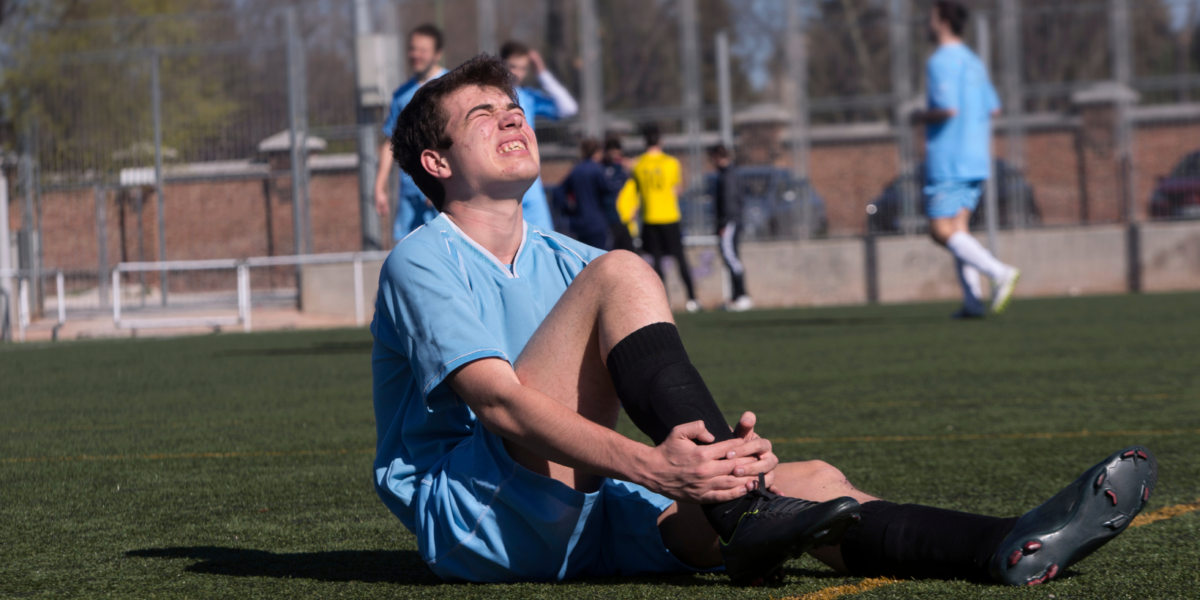Spring sports season is upon us, and with it comes the risk of injuries. While there are many possible injuries that can occur during a game or practice, the 5 most common spring sports injuries are: sprains, rotator cuff, shin splints, concussions, and ACL tears.
Each of these injuries can have serious consequences if they are not properly treated and managed.
Physical therapy plays a critical role in helping people heal from injury or manage pain. By promoting movement, physical therapists can help restore mobility, reduce inflammation, and strengthen muscles to help alleviate discomfort.
We, as physical therapists, also work with patients to create an individualized treatment plan that focuses on increasing range of motion, improving posture and flexibility, and teaching exercises for strengthening.
They may include manual therapy techniques such as massage and joint mobilization to reduce tension or pressure on the injured area. This can help promote healing and reduce pain levels.
Physical therapists are especially beneficial when it comes to reducing the risk of re-injury by providing advice on proper body mechanics during activities like sports or everyday tasks.
They will assess any potential weakness before prescribing an exercise program tailored to an individual’s needs. Physical therapists are also knowledgeable about the use of assistive devices like orthotics, crutches and braces. They strive to get people back to their daily activities as quickly and safely as possible.
With the help of a physical therapist, patients can develop strategies for managing pain and improving overall performance on the job or in everyday life. Ultimately, physical therapy is a valuable tool for reducing pain and promoting healing from injury or illness when used in combination with other treatments such as medications or surgery.
5 of the Most Common Spring Sports Injuries
1. Sprained Ankles
A sprained ankle occurs when one or more ligaments supporting the ankle joint stretch too far or tear. This type of injury is extremely common among athletes who participate in soccer, basketball, tennis, and other activities involving running and jumping.
2. Shin Splints
Shin splints occur when soft tissues become irritated due to overuse or excessive strain on muscles in the lower leg. They are common among runners and athletes involved in high-impact activities such as jump roping or running.
3. ACL Tears
Anterior cruciate ligament tears (also known as ACL tears) are the most common type of knee injury among athletes who participate in sports such as soccer and basketball that require quick turns and stops. When an athlete experiences an ACL tear, it is essential to seek medical attention immediately.
4. Concussions
Concussions are common in spring sports, particularly those that involve contact or collisions, such as football and soccer. While most concussions resolve on their own within a few days, some may require medical attention.
It’s important to be aware of the signs and symptoms of a concussion so that you can recognize it and seek help if necessary. Symptoms may include headache, dizziness, confusion, difficulty concentrating, nausea or vomiting, fatigue, sensitivity to light or sound, ringing in the ears, memory problems, balance issues and blurred vision.
5. Rotator Cuff Injuries
Rotator cuff injuries involve the muscles and tendons that stabilize the shoulder joint. They are common in sports such as baseball, volleyball, javelin throwing, and other activities that require repetitive overhead movement of the arms.
Treatment usually involves rest, ice, pain relief medications like ibuprofen or acetaminophen, physical therapy exercises to stretch and strengthen muscles around the shoulder joint.
Spring sports season is a time for athletes to get back into the game and improve their competitive edge. However, proper warm-up and stretching routines are essential for injury prevention.
If injuries do occur, physical therapy can be an invaluable tool in helping the athlete recover quickly and safely. Physical therapists help diagnose the cause of injury, create individualized treatment plans, teach athletes preventative exercises, provide hands-on treatments such as manual therapy or electrical stimulation, and ultimately return players to their sport with improved biomechanics and confidence.
With the right approach to training and rehabilitation, athletes can stay healthy this spring season!
Have You Suffered an Injury This Season?
The spring season is underway. If you have picked up an injury, are still dealing with lingering pain, and want to return to the top of your game without pain, make sure to visit us so we can get you on the road to recovery!
We are offering a Sports Injury Assessment, which will begin the process of us identifying the right treatment for the pain or injury you have that is keeping you from competing at a high level.
We have worked with many athletes that are being held back by injury or are playing through pain. Playing with injury or pain will only prolong the issue and could cause more long term issues. Because of this, we recommend that you seek treatment as soon as possible to help you identify the problem and get back to your sport pain free.
To find out how our rehabilitative experts utilize a variety of physical therapy techniques that can help you overcome your pain and stay active, schedule a time to come see us by completing our online contact form in under 30 seconds or call our friendly team on (425) 252-3908.
Unsure whether we are right for you?
We understand that you may not have visited a Physical Therapy clinic before and be unsure whether it’s going to help you after suffering an injury in your sport. That is why we invite you to come in for a Sports Injury Assessment.
Arrange A Sports Injury Assessment at one of our five locations (Bellevue, Everett, Factoria, Kirkland and Lake Stevens) today!
Other Helpful Ways To Stay Active And Get Back To Enjoying Your Sport Pain-Free
Read Our Blog – Getting Spring Sports Ready
Read Our Blog – 5 Benefits Of Having A Personal Trainer
Follow Us On Social Media – Sports Physical Therapy Facebook and Sports Physical Therapy Instagram

